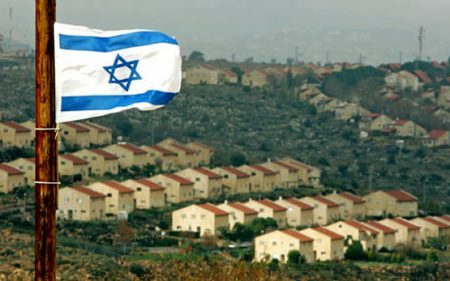by Madeeha Araj/ NBPRS/PNN
The southern areas of Hebron are being subjected to extensive settlement expansion procedures, as Israeli occupation authorities announced the seizure of about 1,500 dunams of populated land planted with olive trees and almonds, located within the borders of the Dura Municipality, to the south of Hebron.
In 1987, a state document was signed against Dura’s basin n8, by Israeli military order, and, on July 31st of this year, Israeli authorities completed the inspection and amendment of its borders, knowing full well that part of the land is located in Area B, and officially under the jurisdiction of the Palestinian Authority (PA). The old-new, recently amended military order provides for the seizure of lands adjacent to Beer-Sab’a Street, which connects eastern Dura’s countryside and the southern town of Dhahriya, and belongs to Amr, Abu Sharar, Al-Khatib, Shaheen, Dodeen, Hreibat and others.
In Hebron, colonial settlers set up 6 new outposts on Palestinian land, between 2017 and 2019, hundreds of meters away from major settlements built in previous years. Those outposts were erected on the eastern, western and southern sides of the governorate, particularly in the lands of Dura, Bani Na’im, Yatta, As-Samu, Dahreiah and Sa’ir. Occupation authorities have been practicing, for 25 years since the massacre committed by Baruch Goldstein, there, a policy of harassing Palestinians, in the attempt to force them to leave the city under security pretexts, and to replace them with settlers.
In Nablus, a new settlement plan was exposed that would ultimately seize more land in Naqora, Sebastia and Burqa, to the north of Nablus, in order to expand the settlement of Shafi Shomron — through diverting agricultural land located adjacent to the settlement — from basin n12 to the settlement, and knowing that settlement outposts around Nablus witness an expansion of their structural plans at the expense of citizen lands, as is the case with the lands surrounding the settlements of Yitzhar and Bracha, to the south of Nablus.
In Jerusalem, the so-called “temple” organizations are preparing to carry out a series of Judaization programs, in addition to large-scale invasions of Al-Aqsa Mosque, on the occasion of the festive season, and to incite further invasions into the mosque, to impose a de facto position, there. These organizations have begun to intensify their calls, disseminating them via affiliated media and social networking sites, stressing their full coordination with the occupation police, to facilitate such acts.
In the wild Sawahri area of Jerusalem, Israeli authorities demolished a sit-in-strike tent after the army declared it a closed military zone, preventing residents from reaching it, in order to seize these lands, and in spite of the fact that they are located far away from Palestinian communities. Residents and owners say that they will rebuild the tent and continue with their sit-in-strike.
During her speech before the United Nations Human Rights Council, Head of Contacts and Media at the Marsad Organization, Sillin Yashar — as well as many other European and international NGOs, including the Euro-Mediterranean Observer — expressed their concerns about the large-scale demolition measures in the occupied West Bank, particularly in occupied East Jerusalem, describing them as “terrifying,” as Israeli authorities destroyed more than 59 homes, in East Jerusalem, during the first half of 2019. 215 demolitions, counted in 2018, led to the displacement of thousands of Palestinians, in clear violation of International Law and International Humanitarian Law.
It is worth mentioning that these organizations have demanded the international community to conduct the necessary investigations in order to put an end to the Israeli occupation and it violations.
(edited for the IMEMC by c h r i s @ i m e m c . o r g)

